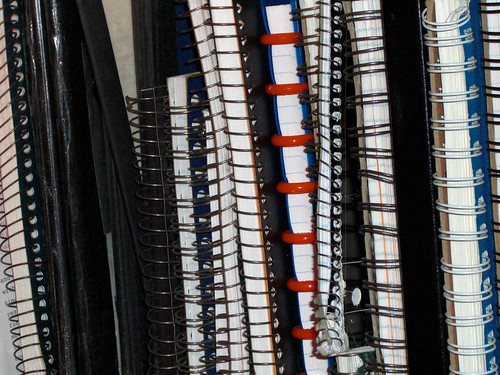The author paints pen-and-ink writing as a nostalgic experience -- the smell of the ink, the swooping letters on the page -- but takes it a step farther, too. He contends that "this is what we should be doing rather than email. We should be writing to people on paper with fountain pen and ink. Even broken penmanship can be as smooth as soft summer waves. And the waves can carry the thought."
He is right to say that thoughts in writing come from the heart. For years I have kept writer's notebooks, journals, records of my thoughts. I have never written with my heart so much as I have done in those books. Many times I even address a "you" in my writing, like a letter never meant to be delivered.

I've already written about how much I adore the sight of my friends' handwriting -- on letters, in margin notes in a manuscript, on post-its left on my desk. Handwritten words carry more soul than type.
Writing with pen and paper is a tactile experience. I am particular about the kinds of pens and paper I use for my writing, and I always have been. I loved working at Staples as a teenager in part because it afforded me so many opportunities to examine the selection of notebooks, test their feel in my hand, fan the pages, measure them to see if they would fit in my bag. I loved the ritual of choosing, finding. Pens, too -- I was constantly searching for the right one. For about 10 years now my personal choice has been the Pilot G2 7mm gel ink pen, current colors lime and carmel. These pens feel balanced in my hand, write reliably, and allow my hand to move quickly and easily across the page.
Author Natalie Goldberg (of Writing Down the Bones, a book I refer to often) recommends writers relax their bodies, ignore the margins on the page, let their handwriting go sloppy, and just write. Never stop to think, just set a timer and write continuously. At its core, writing is a primal experience. Just like music, it can exist in a very academic space, but when a performer makes a deep, raw connection to a song, we know. Likewise, when I read back through my daily writing exercises, decode all the scribbles and find a place where I broke down my hesitations and just wrote directly from heart to hand, I feel that. I feel it on a level I just don't get from typed letters on a screen.
Maybe this is why I've chosen to make audio recordings on a few occasions instead of typing out my daily writing in Evernote. Stripped of my quick-writing right hand, the next best thing is to see if I can keep talking in a constant stream until my thoughts are emptied out.
As we gain more and more tools for recording our thoughts, it's important that writers not forget our craft is a tactile one, too. We need to keep notebooks as much as a visual artist needs a sketchbook, so we can feel our words coming straight from our hearts.

No comments:
Post a Comment